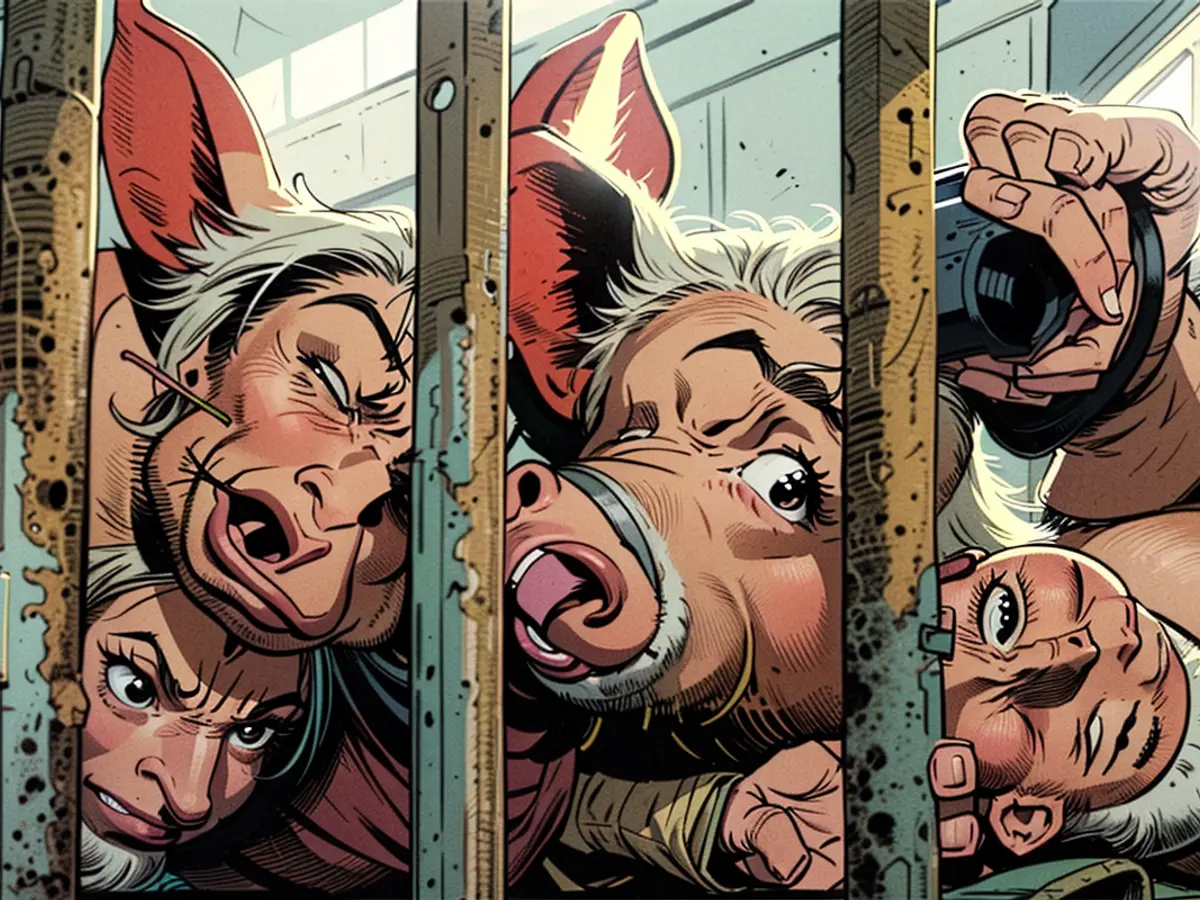Livestock farming - Fewer pigs and cattle in German stables
In Germany, fewer pigs and cattle have been kept recently. According to the Statistical Federal Office, there were 20.9 million pigs and 10.6 million cattle reported as of May 3rd of this year. One year ago, there were 2,120,000 more pigs and 310,000 more cattle.
In the long term, livestock farming in Germany is declining. The reasons are the decreasing meat consumption of the population and increased costs for animal welfare. As of the deadline, 15,700 pig farms were registered. This was 42.2% fewer than ten years ago. Since the farms have an average size of 1,300 animals, the absolute number of animals only decreased by 25.4%.
The cattle herd shrank by 16.3% within ten years. Since 2014, more than one third (36.3%) of the farms have given up their dairy farming.
- The Statistical Federal Office, known as Destatis, has reported that as of May 3rd, there were 10.6 million cattle in Germany, a significant decrease from the previous year.
- Livestock farming, particularly pig farming, has been experiencing a decline in Germany due to decreasing meat consumption and increased costs for animal welfare.
- Despite the decrease in the number of pig farms, with only 15,700 farms as of the deadline, the reduction in the total number of pigs has been less dramatic, decreasing by just 25.4% when considering the average farm size of 1,300 animals.
- The cattle herd in livestock farming has shrunk by 16.3% within the last ten years, and since 2014, more than one-third (36.3%) of dairy farming operations have ceased operations.
- Wiesbaden, where Destatis is located, has been witnessing changes in Germany's agriculture sector, particularly in livestock farming, as the number of both pigs and cattle has been decreasing due to various factors such as shifting consumer habits and increasing costs.








